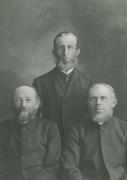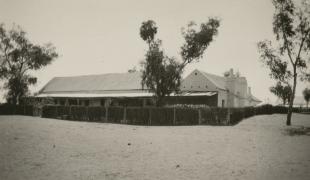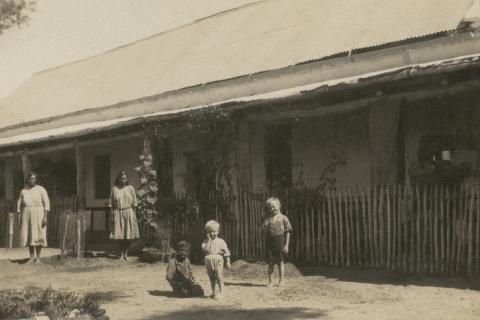Hermannsburg Mission is also the only surviving relatively intact 19th century Lutheran mission. The influence of German pastors and tradesmen of German origin in South Australia (1877-1922) is clearly visible in the planning and layout of the mission, and in the design and construction of the masonry buildings. Residential buildings incorporate features of traditional German farmhouses, also seen in German Lutheran settlements in South Australia. These features include gable ventilators and internal cross-wall construction based on German fachwerk techniques. The Colonists’ Residence and the Manse, erected 1877-1891, are particularly important in demonstrating these features.
Individual buildings illustrate the provision of accommodation for German pastors, lay colonists and Aboriginal people, and other operational functions of the mission. The building referred to as the Manse (along with the Colonists' Residence) contributes to the national significance of the Hermannsburg Heritage Precinct. It is one of several buildings that make up the range of small-scale, residential accommodation erected from 1877, which illustrates the nature of accommodation erected and used by the first German Lutheran missionaries and lay colonists
The Hermannsburg Lutheran Mission was established in 1877 on the Finke River in the centre of the continent by W.F. Schwarz, from Württemberg, L.G. Schulze from Saxony and A.H. Kempe, from Dauben near Dresden (photo at left). They had headed north from Bethany in the Barossa Valley and experienced great hardship in setting up an economically viable community in the heat of Central Australia.
Dorothea Queckenstedt and Wilhelmine Schulze from Germany, the wives of missionaries Kempe and Schwarz were the first white women to settle in Central Australia. They arrived at Hermannsburg on 10 April 1878, after a six-month trip from South Australia. They were the only European women at the mission for three years. Dorothea and Wilhemine laid the foundation for the white women who came after them to Central Australia. In 1877, after a four-month sea voyage from Germany, they set out from Adelaide for Hermannsburg, where they were to marry Pastors Kempe and Schwarz who had established a mission on the Finke River. It was November and in the height of summer. They had three bullock wagons and a wagon drawn by six horses. The journey was to take them almost six months. Pastor Kempe left Hermannsburg to meet the party, which included new missionary, Pastor Schulz. They met half-way and on 1 March 1878, at Dalhousie Springs, Pastor Schulz officiated at the wedding of Dorothea (Marie Henriette Dorothea Queckenstedt) and Herman Kempe. They used water canteens for an altar, decorated the tent with greenery, and held a frugal wedding reception.1 After the wedding they continued on to the Mission. Wilhelmine and Wilhelm Schwarz were married soon afterwards at Hermannsburg.
In later years, this building was home to the Hermann and Hilda Heinrich and their photo albums often depicting life around this building can be found at the South Australian Museum.
- Scherer, P.A 1963 Venture of Faith: An Epic in Australian Missionary History. Lutheran Publishing House p 77 / 2nd edition 1975
Media







